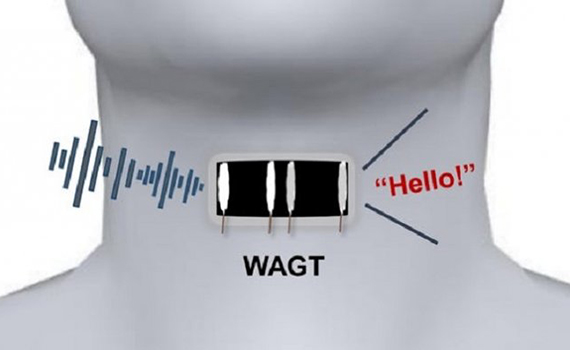NEWS
Graphene sensor sticker returns voices to dumb people

A team of scientists from Peking University Tsinghua has developed a prototype speech synthesizer (WAGT) for people who have no voice, which is a new kind of wearable electronics. At its core, it copies the technology of a laryngophone, but it uses advanced microelectronics. A graphene plate was used as a throat vibration sensor.
Graphene is applied to a thin strip of polyvinyl alcohol measuring 15 x 30 millimeters. It can be wetted with water and attached to the skin, as a temporary tattoo.
The principle of the device is the same as that of the laryngophones - the graphene plate is bent under the action of skin vibrations during a conversation, which is fixed by the microcontroller. Even if a person cannot utter a sound, his speech apparatus still makes movements — this is what he picks up and then decodes the electronic unit of the gadget. The received signal is converted into commands and the synthesizer plays the desired sounds.
So far, the prototype is able to recognize only a narrow set of simple words - hello, bye, yes and no. However, the fact that researchers have learned to recognize and voice the words of dumb people - and in automatic mode - is already a triumph.






